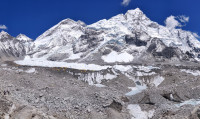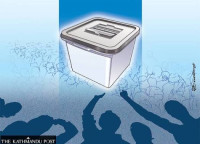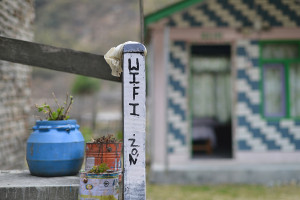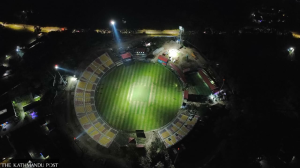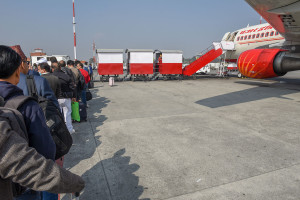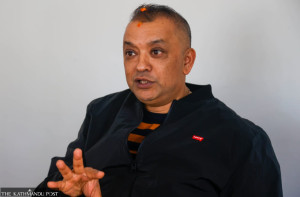Columns
Waning winter rains: A burgeoning crisis
Intense late monsoon rain followed by a long, dry winter is a recipe for widespread wildfires.
Madhukar Upadhya
Nepal has engaged in high-level climate justice advocacy, whether at the annual CoP events or in The Hague. However, even if these global talks become fruitful, the intensifying climate-induced problems at home indicate that several challenges remain unaddressed. This will inevitably cost the country on multiple fronts in complex and compounding ways for decades to come.
The alarming case at hand is the slowdown of winter precipitation. Even with the strong likelihood of a third consecutive dry and rainless winter, it is concerning that the issue of winter drought has been absent from our climate discourse. We don’t know if this change in precipitation is due to the shifting global water cycle, but it seems that increasingly intense monsoons and dry winters will be more common in the years ahead, throwing our established water cycle into disarray.
Changing global water cycle
Summarising the state of the global water cycle in 2024, the Global Water Monitor Report (GWMR) emphasised that climate change is escalating water challenges globally. Water-induced disasters have worsened with the increased strength and intensity of storm systems. While the annual average precipitation was still close to what it was from 1995-2005, the record-high 24-hour rainfall extremes in 2024 were 52 percent more frequent, and it appears to be increasing by 4 percent every decade. In Nepal, we’ve also begun experiencing record-high 24-hour rainfall. In 2024, for the first time, the country recorded 624 mm of rainfall in a single day—the highest ever recorded since 1993, which recorded 540 mm of rain in a day.
The other extreme of precipitation is even more concerning. The months with record low precipitation were 38 percent more common in 2024 relative to the 1995-2005 baseline period. Though it contributes only about 20 percent of the total annual precipitation, winter precipitation is vital in our water budget to support winter crops, maintain grasslands, contain wildfires, and, most importantly, deposit snow in the high mountains. A decline, thus, translates to lower production of wheat and barley, dry hill slopes fueling wildfires and little to no snow on the high mountains.
Even though the yearly precipitation measured at weather stations and used in precipitation analysis by researchers and analysts doesn’t show significant changes on average, its skewed distribution, with numerous events of high 24-hour rainfall and months of record-low precipitation, is compounding economic and environmental risks to our society. This trend has been escalating over the last two decades.
Further, the GWMR also shared projections for 2025. Ongoing climate change, according to the report, increases the potential for extreme weather events, including flash floods, droughts and intense storms across many regions. By extension, this means that the deluge we witnessed last September and the dry winter we are seeing now may repeat in future in most parts of Nepal.
Drought scenario
To put it in perspective, let us briefly focus on our drought situation. We’ve had occasional droughts during winter months and for a brief period during summers in the past. The droughts became more evident and damaging in the early 1980s. Over the next 25 years till 2004, we experienced 12 drought years: Eight were relatively normal droughts that lasted for a short period, while four were severe, lasting for months. However, the situation has worsened since 2005, with droughts increasing in frequency and duration; there were six severe droughts in around a decade (2005-16).
After 2016, droughts appear to have gotten progressively more disturbing. In 2018, the lack of rainfall in eastern parts of the country until March resulted in substantial crop loss. The following monsoon failed to bring adequate water to several mountain villages, causing a severe drought during the mid-monsoon. In 2020, the country experienced a harsh winter drought again—rainfall dropped by 75 percent compared to the normal average. It was another dry winter the following year, which damaged winter crops and deteriorated air quality in Kathmandu to its worst-recorded level.
In 2022, after the late monsoon rain in October, apart from the western provinces of Karnali and Sudurpaschim, which received some rain, most of the region in the country remained dry for nearly five months. In 2023, when we’d already neared the halfway mark of the monsoon season, all Tarai districts, except for Morang, faced extreme drought-like conditions due to below-average rainfall, while winter rain failed. Lastly, despite a low rainfall forecast between December and February this past year, the winter has been dry, and we’ve had no rain. The drought scenario since 2005, and more so in the last decade, indicates that winter precipitation is progressively declining.
Even though precipitation brought by the western disturbance this winter has been more concentrated in the Indian parts of the Himalayas, the little we received in the adjoining highlands of Sudurpaschim and Karnali Provinces was far from enough to replenish soil moisture needed for winter crops, let alone for groundwater storage. The rest of the country, especially towards the east of Karnali Province, remained dry except for some drizzles in the highlands.
Changing risk profile
Intense late monsoon rain followed by a long, dry winter is a recipe for widespread wildfires. If these wildfires are followed by heavy early monsoon downpours, as has increasingly been the case in recent years, devastating disasters such as those in 2021 and 2023 will surely recur. This cycle of short duration, intense monsoon rain and long winter drought has substantially changed the risk profile—a cocktail that extant institutions, logistics, guidelines and standard operating procedures (SOPs) simply can’t tackle.
We do not have any institution dedicated to tackling droughts. Those working in the water sector focus on utilising available water for energy, irrigation, drinking water supply and other purposes. When water sources dry out, these institutions merely search for alternate sources rather than manage storm water to revive dry sources.
Even local governments aware of existing and lost water sources are investing massively in inter-basin water transfer or tapping deep aquifers using boreholes and pumps. While they provide some much-needed respite from water shortages, they will surge the price of making water available. Besides, it won’t help enhance our ability to manage water sources on an ever-warming planet where the global water cycle appears to be mutating. It’s time we revisited our perceptions about the water resources that we consider national pride and factor in the intense monsoons and waning winter rains in managing them.




 8.12°C Kathmandu
8.12°C Kathmandu

